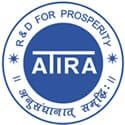Primary copper production is critical for India to be an export hub, says Dr Saraswat
Australia has agreed to provide 100% market access on all Indian products under the Free Trade Agreement while the UAE FTA is expected to double Indian exports to US$50 billion in five years from the current US$27 billion, Dr Srikar K Reddy, Joint Secretary, Ministry of Commerce & Industry, has told an industry convention.
“We hope the agreement with Australia will be important also for the copper industry,” he said, pointing out that India needs to import copper ore to meet growing demand from industries.
Expected to start from October 2022, the FTA with Australia is India’s first trade pact with a developed country over a decade.
India has now emerged as a trusted partner in global supply chain, added Dr Reddy.
“We are concluding FTAs with countries exhibiting complementarities especially with the developed countries. We have concluded the UAE FTA in record 3 months and businesses on both sides are benefiting from it,” he told the seminar on ‘Copper Industry Convention: Vision 2030 & 2047’, organized by FICCI on 2 June 2022.
“These 2 FTAs will be adding value to Indian GDP and create 2 million jobs in India.”
NITI Aayog Member Dr V K Saraswat elaborated on the challenges being faced by the local industries due to shortage of copper ore.
India imports copper concentrates for its smelters and domestic demand for copper and its alloys is met through domestic production, recycling of scrap and by imports.
“In the current paradigm of copper production, we cannot wish away the copper recycling strategy as recycling requires 85% less energy.
“Recycling should be done as the rate of recycling is very low. We need to do backward integration in the area of copper recycling,” he pointed out.
Dr Saraswat further shared that there should be standards from the raw material stage up to finished products to maintain quality and safety of refined copper.
“Primary copper production is critical for India to be an export hub.”
Dr Saraswat underlined that the recycling industry has to have a major quality standard, and this comes from the quality of scrap used. There has to be a scrap standard in place.
“Now we are working towards setting up scrap standard. We have to solve this problem collectively. India has all the capabilities to lay down standards with the best of the quality.
“It is the question of working together and putting the right kind of standards in place which is required. We need to have synchronized efforts to make copper industry number one industry in the world,” he emphasized.
Elaborating on the environmental, social and governance measures, Dr Saraswat stated that there is a need for copper sector also to get some incentives including PLI to mitigate the extra cost borne by the industry.
“We need to focus on value added products and these products can be made only if we have a PLI scheme for the sector,” he noted.
He highlighted the challenges of the copper sector, such as the availability of basic raw material.
“Securitizing the copper concentrate along with other raw material is very important. The speed at which the foreign mines acquisition needs to be done by our country has to be accelerated,”
Dr Saraswat also pointed out that FTA should be done with utmost care in any segment and “in case of copper it is very essential”.
Sanjeev Verma, Director, Ministry of Mines Ministry, added that the copper industry has a lot of significance in the Indian economy and has diversified application across many sectors.
“Copper industry forms an integral part of our economic growth supporting the mission of Aatmanirbhar Bharat and US$5 trillion economy.”
Verma also stated that under the circular economy, the ministry is working on zero waste management of non-ferrous metals with NITI Aayog.
Copper is a key element for transition to green and clean India, stressed Rohit Pathak, Chief Executive Office, Hindalco Industries, Birla Copper.
A four-pronged effort is required to scale up the Indian copper industry, he underlined.
Pathak further shared that there are four key areas which need attention for the holistic growth of the Indian copper industry. India needs to secure supply of copper concentrate for scaling Indian production to meet India’s future demand.
India needs strong standards for copper scrap as 80% of copper use is in electrical applications. This will also encourage responsible recycling.
India should focus on innovation and New Product Development in the copper industry to cater to demand from emerging sectors.
Puneet Khurana, Deputy Chief Executive Officer, Sterlite Copper, has called for a strategic approach for copper concentrate security which is critical.
There should be some incentive for the exports in the wire and cables industry, he added.
Downstream copper-based product manufacturer Milan Mehta highlighted the growing use of winding wires across various sectors like automobiles, construction, transmission among others. While the production stands at 420,000 tonnes per annum, the capacity utilization has only been at 60% countrywide.
Winding wires industry can grow by 7.5-8% per annum in the next decade and grow up to 1.8-2 MT by 2047, given the demand growth due to investment trends in generation and transmission, decarbonization goals, EVs, demand for white goods consumer durables and greater power consumption.
This would, however, require the work of strong, supportive primary copper producers, reliant custom duty structure, circular economy pursuits, rationalization of GST from 18% to 12%, and improvement in quality standards and investment avenues.
Downstream Manufacturer Gopal Kabra pointed out that the global copper wire business stands at US$500 million, but India’s share remains meagre at 5%.
“Copper quality is critical to prevent fire related accidents,” he added.
Kabra sees the need to expand and incentivize the export in wire and cable industries. fiinews.com











